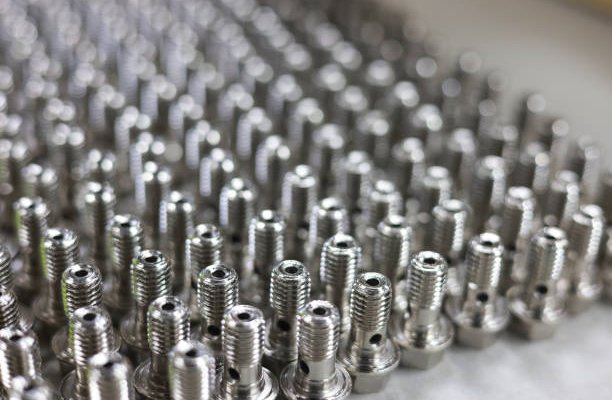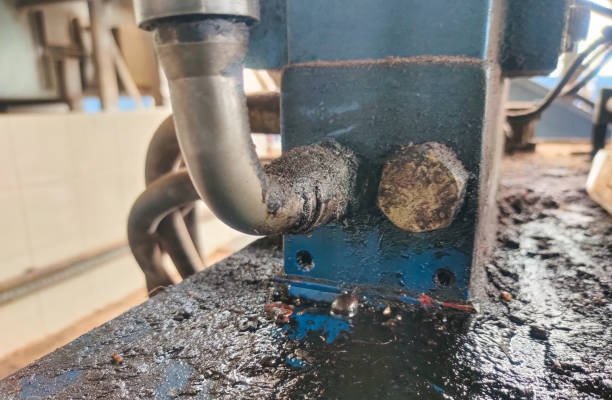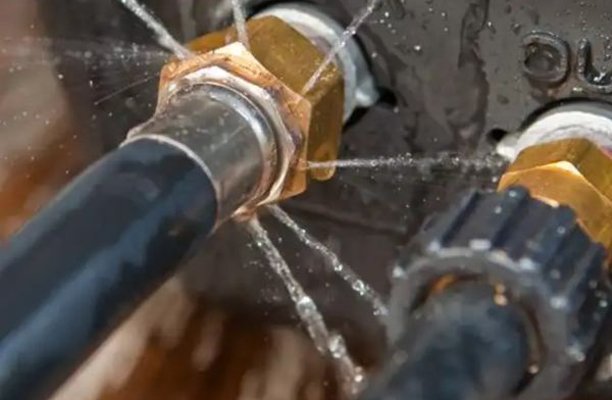Hydraulic systems are the unsung heroes of modern machinery, powering everything from industrial equipment to automotive applications. A key component of these systems? Hydraulic fittings. When you’re sourcing fittings in bulk, the stakes are high—quality and reliability can make or break the efficiency of your system. But don’t sweat it! This blog will walk you through the ins and outs of bulk hydraulic fittings, helping you make smart, cost-effective decisions.
So, what exactly are bulk hydraulic fittings? Why should you care about buying them in bulk, and how do you choose the best ones for your needs? Stick around—we’re covering it all.
What Are Hydraulic Fittings?
Hydraulic fittings are small but mighty components that connect hoses, tubes, and pipes in hydraulic systems, ensuring fluid flows without leaks or interruptions. These fittings play a critical role in maintaining the system’s pressure, preventing wear and tear, and ensuring the equipment runs smoothly.
Common materials for hydraulic fittings include:
- Steel: Known for its strength and durability, ideal for high-pressure systems.
- Brass: Corrosion-resistant and great for lower-pressure applications.
- Stainless Steel: Perfect for environments exposed to moisture or chemicals.
Why Buy Hydraulic Fittings in Bulk?
If you’re running a business or managing heavy-duty operations, buying bulk hydraulic fittings isn’t just a good idea—it’s a game-changer. Here’s why:
- Cost Savings: Buying in bulk often comes with significant discounts, saving your business money in the long run.
- Consistency: Ensures you have a steady supply of compatible fittings, reducing downtime.
- Streamlined Inventory: Avoid scrambling to reorder every time you run out.
- Customized Solutions: Bulk suppliers often allow for customization, so you get exactly what you need.
Types of Hydraulic Fittings
Choosing the right type of fitting is crucial to ensuring the efficiency and longevity of your hydraulic system. Here’s a breakdown of the most common types:
1. Compression Fittings
- Use compression rings to create a tight seal.
- Best for medium-pressure systems.
2. Crimp Fittings
- Require a crimping tool for installation.
- Ideal for high-pressure applications.
3. Push-to-Connect Fittings
- Quick and easy to install.
- Great for applications where speed is critical.
4. Flare Fittings
- Feature a flared end that enhances sealing.
- Commonly used in automotive and industrial systems.
5. Threaded Fittings
- Include NPT (National Pipe Thread) and BSP (British Standard Pipe) types.
- Popular in both low and high-pressure settings.
Applications of Hydraulic Fittings

Hydraulic fittings are essential in a wide range of industries. Let’s explore some of their key applications:
1. Construction Equipment
Hydraulic excavators, bulldozers, and cranes rely heavily on robust hydraulic systems. Bulk fittings ensure these machines stay operational even under extreme conditions.
2. Agriculture
Tractors, plows, and other agricultural equipment use hydraulic systems to lift, push, or pull heavy loads. Fittings designed for durability and corrosion resistance are a must in this sector.
3. Manufacturing
In factories, hydraulic systems power machinery like presses, injection molding machines, and conveyor belts. Bulk hydraulic fittings allow manufacturers to maintain uninterrupted production.
4. Automotive
Hydraulics are used in braking systems, power steering, and even lifting systems in automotive applications. Fittings must meet strict safety and performance standards.
5. Oil and Gas
From drilling rigs to refinery equipment, the oil and gas sector depends on hydraulic systems that can handle high pressures and harsh environments. Bulk fittings designed for high-pressure and high-temperature applications are critical here.
How to Choose the Right Hydraulic Fittings
Not all hydraulic fittings are created equal. Here are a few tips to help you pick the right ones for your system:
1. Understand Your Application Needs
- Consider the pressure, temperature, and type of fluid in your system.
- Match the fitting material to the operating environment (e.g., steel for high-pressure, brass for corrosion resistance).
2. Check Compatibility
- Ensure the fittings are compatible with your hoses, pipes, and connectors.
- Double-check thread types and sizes to avoid mismatches.
3. Prioritize Quality
- Invest in high-quality fittings from reputable suppliers to reduce the risk of leaks or system failures.
- Look for certifications like ISO or SAE standards for added assurance.
4. Opt for Customization
- Many bulk suppliers offer customization options, so you can order fittings tailored to your unique specifications.
Benefits of High-Quality Hydraulic Fittings
When you invest in quality fittings, the benefits extend far beyond the initial purchase. Here’s what you stand to gain:
- Improved System Efficiency: Well-made fittings minimize fluid loss and maintain consistent pressure.
- Extended Equipment Lifespan: High-quality components reduce wear and tear on your machinery.
- Lower Maintenance Costs: Reliable fittings mean fewer repairs and replacements.
- Enhanced Safety: Preventing leaks and malfunctions keeps workers and equipment safe.
Where to Buy Bulk Hydraulic Fittings

The market is flooded with suppliers, but not all are created equal. Choosing the right supplier can make a significant difference in the performance and longevity of your hydraulic systems. Here are a few tips for finding the best supplier:
- Research Online Reviews: Look for suppliers with positive reviews and testimonials to ensure reliability and quality.
- Compare Prices: Shop around to find a supplier that balances cost with quality. Avoid the cheapest options if they compromise on materials or certifications.
- Ask About Customization: See if the supplier offers tailored solutions for your unique needs. Customization is particularly useful for specialized applications.
- Check Lead Times: Ensure the supplier can deliver your fittings promptly to avoid operational downtime.
Why Consider Taske for Bulk Hydraulic Fittings?
If you’re looking for a dependable supplier, Taske, a leading hydraulic fitting OEM manufacturer in China, is an excellent choice. They check all the boxes for quality, affordability, and service:
- Reputation for Excellence: Taske is known for its high-quality hydraulic fittings that are designed to perform under demanding conditions.
- Custom Solutions: As an OEM manufacturer, Taske offers fully customized fittings to meet your specific system requirements.
- Global Reach: Taske ships globally and offers reliable delivery times, so you can count on your fittings arriving when you need them.
- Affordable Pricing: With competitive pricing and bulk discounts, Taske provides cost-effective solutions without sacrificing quality.
- Diverse Product Range: From threaded to compression fittings, Taske covers all the popular types of hydraulic fittings, making it a one-stop shop for your needs.
How to Get in Touch with Taske
You can learn more about Taske’s products and services by visiting their official website at Taske Hydraulic Fittings. You can also contact their sales team for a quote or to inquire about customization options and lead times.
How to Negotiate with Hydraulic Fitting Suppliers
Getting the best deal isn’t just about finding the lowest price—it’s about creating value for your business. Here’s how to negotiate effectively with bulk suppliers:
- Ask for Volume Discounts:
Most suppliers offer tiered pricing based on order size. Don’t hesitate to negotiate discounts for larger orders. - Bundle Your Purchases:
If you need additional components like hoses or adapters, ask if bundling them with your fittings can reduce costs. - Request Samples:
Before committing to a large order, request samples to test the quality and compatibility of the fittings. - Build Long-Term Relationships:
Suppliers are more likely to offer favorable terms to loyal customers.
Common Mistakes to Avoid When Buying Hydraulic Fittings in Bulk
Making informed choices is key to getting the most out of your bulk hydraulic fittings purchase. Avoid these common pitfalls:
- Ignoring Compatibility
Mixing fittings from different standards (like NPT and BSP) can lead to poor seals and leaks. Always confirm thread compatibility. - Overlooking Material Quality
Cutting corners with cheap fittings may save money upfront, but the risk of premature failure and system damage isn’t worth it. - Failing to Assess Supplier Reliability
Always vet your supplier for quality assurance, customer support, and lead time reliability. - Not Considering Future Needs
While buying in bulk saves money, ensure you’re purchasing enough to meet your long-term needs without overstocking outdated components.
Maintenance Tips for Hydraulic Fittings
Ensuring the longevity and performance of your hydraulic fittings doesn’t stop after installation. Regular maintenance is crucial for keeping your system running smoothly. Here’s how to do it right:
- Inspect for Leaks
Check for any signs of fluid leakage around fittings. A small leak can quickly turn into a big problem. - Tighten Properly
Over-tightening fittings can damage threads or lead to cracks, while under-tightening can cause leaks. Use a torque wrench for precise installation. - Replace Damaged Components
Don’t delay replacing worn-out or damaged fittings. Compromised components can lead to catastrophic system failures. - Use Thread Sealants When Necessary
Some fittings may require thread sealant to prevent leaks. Make sure you use the appropriate sealant for the material and application. - Keep Fittings Clean
Contaminants like dirt and grime can accelerate wear and tear. Regular cleaning extends the life of your hydraulic components.
Conclusion
Bulk hydraulic fittings might seem like a small piece of the puzzle, but their impact on your hydraulic system’s efficiency and reliability is huge. By choosing the right fittings—and buying in bulk—you’ll save money, reduce downtime, and keep your equipment running smoothly for years to come.
So, ready to upgrade your hydraulic system? Dive into the world of bulk hydraulic fittings and make a decision that powers your business forward!
FAQs
1. What’s the difference between NPT and BSP threads?
NPT threads are common in North America, while BSP threads are widely used in Europe. They have different thread angles, so they’re not interchangeable.
2. How do I prevent hydraulic fitting leaks?
Ensure fittings are properly installed, use thread sealants when necessary, and regularly inspect for wear or damage.
3. Are stainless steel fittings worth the extra cost?
Yes! Stainless steel fittings offer excellent corrosion resistance, making them ideal for harsh environments.
4. Can I mix and match fitting materials?
It’s best to stick with the same material across your system to prevent issues like galvanic corrosion.





